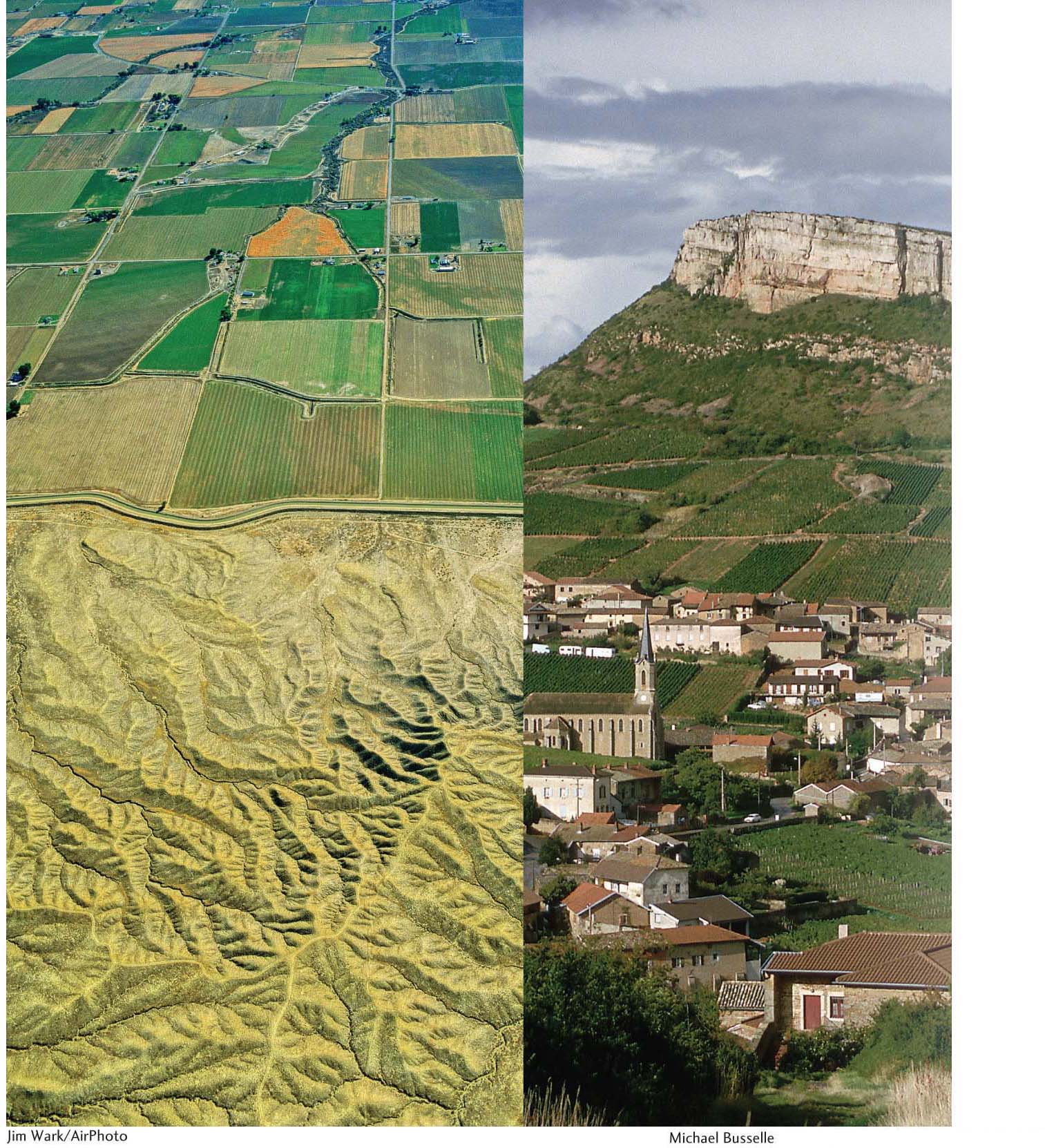The Geography of the Global Food System
316
CHAPTER 8
AGRICULTURE
The Geography of the Global Food System

What differences can you “read” in these landscapes? Can you determine their locations?
Two types of contemporary agricultural landscapes.
(Left: Jim Wark/AirPhoto; Right: Michael Busselle/Corbis.)
Go to “Seeing Geography” to learn more about these images.
317
LEARNING OBJECTIVES
▪8.1
Explain the connection between region and agriculture.
▪8.2
Analyze the role mobility plays in the spatial and cultural patterns of agricultural production and food consumption.
▪8.3
Describe how the processes of globalization alter the geography of agriculture.
▪8.4
Understand how nature-culture relations are expressed through the production and consumption of food.
▪8.5
Relate how agriculture is expressed within the cultural landscape.
Every one of us depends, either directly or indirectly, on agriculture for our survival. It is easy to forget that urban-industrial society relies on the food surplus generated by farmers and herders and that, without agriculture, there would be no cities, universities, factories, or offices.
Agriculture, the tilling of crops and rearing of domesticated animals to produce food, feed, drink, and fiber, has been the principal enterprise of humankind throughout recorded history. Even today, agriculture remains by far the most important economic activity in the world, using more land than any other activity and employing about 40 percent of the working population. In some parts of Asia and Africa, more than 75 percent of the labor force is devoted to agriculture. North Americans, on the other hand, live in an urban society jSSlin which less than 2 percent of the population work as agriculturists. Likewise, Europe’s labor force is as thoroughly nonagricultural as North America’s. Nearly half of the world’s population, however, continues to live in farm villages.
agriculture
The cultivation of domesticated crops and the raising of domesticated animals.